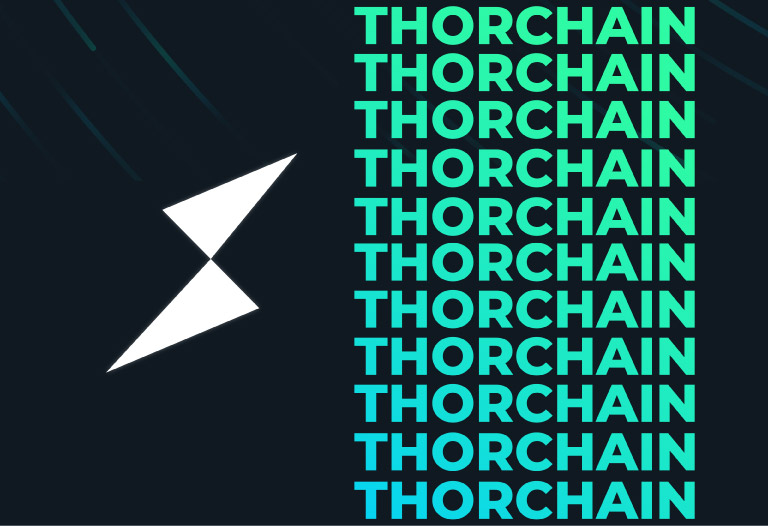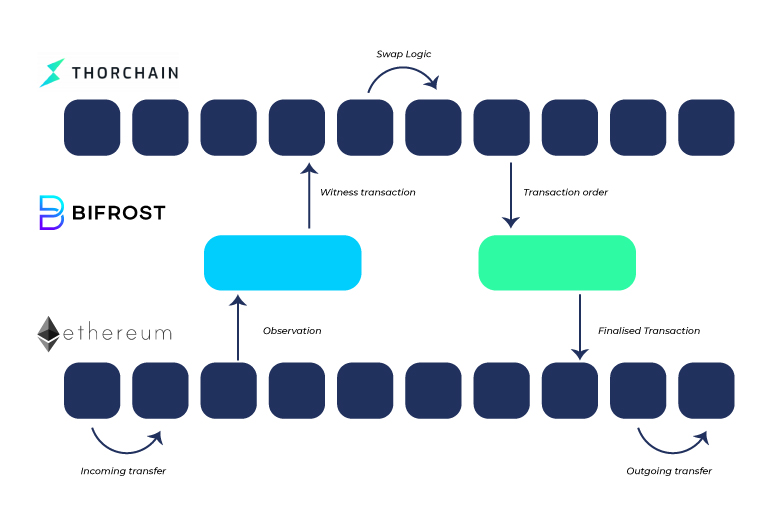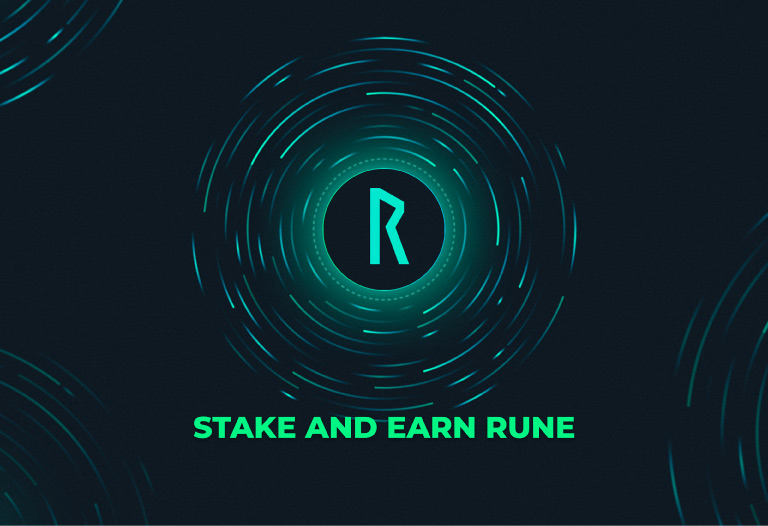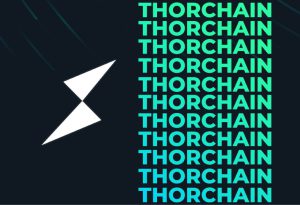
Table of Contents
ToggleAt some point in our lives, it has happened to us that we enter a page like Amazon, Aliexpress or any instagram commerce to buy an item we need.
However, it may happen that we are interested in items from other stores, sellers or platforms and there is no way to solve this problem quickly and safely.
Consequently, if we want to order several items, we must pay different shipping and other additional costs.
These are the moments when we want to be able to order items from different sites, but paying for the same delivery or with the same surplus value.
A similar situation arises in the crypto ecosystem, where it is difficult to exchange coins from different blockchains in a transparent, reliable or even anonymous way.
Certainly, centralized exchanges (CEX) have been in charge of this type of operations, but have they been enough?
Currently, although we have decentralized exchanges (DEX), CEXs remain the only ones facing multi-blockchain operations.
THORchain is an alternative, cross chain and fully decentralized project that facilitates the exchange of tokens or cryptos without third parties and anonymously.
Let’s take a quick look at what THORchain is and how it works!
What is THORchain?
THORchain is an independent blockchain, which aims to function as a decentralized interchain exchange.
In other words, it is a blockchain that bridges external networks to facilitate transfers between blockchains, functioning similarly to a DEX.
It was founded in 2018 with the interest of proposing a short and medium term solution to the shortcomings of decentralized exchanges.
It is based on Tendermint and Cosmos SDK and uses Tendermint BFT (Byzantine Fault Tolerance) as a consensus mechanism.
Likewise, to resist Sybil attacks, it employs Proof of Stake (PoS). In addition, for added security, it implements Threshold Signature Schemes (TSS).
Also facing the DEX problem of finding sufficient liquidity and similar to Uniswap, it uses an automated market maker (AMM) model. An AMM works similar to order book exchanges and has tradeable pairs, such as ETH/DAI. But the difference is that in AMMs you don’t need a counterparty (another trader) on the other side to make the transaction effective. Instead, you must interact with a smart contract that will “create” the market for you.
By doing so, it seeks to maintain a constant total liquidity. However, let’s slow down.

How does it work?
To understand how THORchain works we must analyze how it is composed.
Actors
In the THORchain protocol, 4 actors are involved:
- Stakers or Liquidity Providers: They are in charge of providing liquidity to the system.
To do so, they commit a number of coins that are locked into a smart contract to form part of a liquidity pool (along with other users).
In return they receive rewards called swap fees, which are a commission charged to users for exchanging digital assets for other assets.
- Swappers or users: They are those who exchange digital assets for others, as long as the assets to be exchanged are in the list of available assets and the blockchains are connected to THORchain.
The cost of paying to be able to exchange assets is divided into two: the swap fee that encourages the stakers to continue providing liquidity and the slippage that depends on the size of the trade.
- Traders or arbitrageurs: They are the scales of the system, as they buy undervalued assets on certain protocols and sell them at a high price on another platform to restore the fair market price. As we discussed in the article on What is cryptocurrency arbitrage.
In this way, they monitor asset prices, but since the THORchain protocol, they are not issued any tokens for their action.
- Node operators: They are in charge of monitoring and validating network movements. All nodes in the THORchain network are anonymous and only their IP address and public key can be identified.
Certainly, they have a fixed amount of nodes to operate and it rotates. They are rewarded with the RUNE token and are granted a certain amount of RUNE after each block.
BFT Nodes and Tendermint
At the core of the Thorchain protocol is a network of nodes built with Tendermint and Cosmos SDK.
This allowed THORchain to create a separate blockchain with its own consensus and secure network.
It also takes advantage of the Tendermint BFT model, which allows the network to reach a consensus even if one third of the nodes start to fail.
In addition, the consensus mechanism is important, as THORchain nodes must work together to record transactions from other blockchains.
Vaults or Deposits
THORchain has vaults, which store the system’s funds, just like a bank vault. There are two types of vaults:
- Incoming vaults: These are the largest and slowest, as they store the majority of funds. For money to enter, two thirds of the TSS signatories are required to sign a transaction that can take up to 20 seconds.
- Outgoing vaults: These are smaller and less secure. They are executed by each of the THORNodes. They require only a single signature from the node on which they are executed for money to come out.
TSS
In order to control the transactions in the vault of each of the integrated blockchains, it uses the Threshold Signature Scheme or TSS.
For context, TSS is a cryptographic protocol for distributed key generation and signing.
That is, you can construct a signature that is distributed among, for example, three users and each user receives a part of the private signing key.
Each time a transaction is made, a considerable number of users must be present (2 out of 3), in order to prevent internal or external users from stealing the funds.
This makes the entire transaction signing process more economical and secure.
A practical case
Understanding the above, let’s imagine that we want to exchange bitcoins for Ether.
- First, we would send a standard Bitcoin transaction to one of the THORchain vaults that is intended for Bitcoin.
- Here, THORchain nodes (THORNode) continue to monitor vault transactions to recognize new requests or orders.
- After identification, each THORNode runs the THORchain blockchain itself, in which two parts start working:-A complete node for the connected blockchains. In this case, one node for Bitcoin and one for Ethereum.–The Bifrost Protocol, which acts as a layer connecting the THORchain network and other networks such as Bitcoin or Ethereum. To do this, it monitors vault addresses for incoming transactions or “tokens”.They are called tokens, as they are initially recorded as pending and, once the majority of nodes agree on the status of the transaction, the transaction is finalized.
- At this point, the user’s Bitcoin deposit, or vault, is registered on the THORchain blockchain.
- Once this is done, the THORchain protocol initiates an exchange, which is recorded in the THOR blockchain.
- Subsequently, the Bifrost protocol is used again to initiate the withdrawal of ETH from the Ether output vault and ETHER is sent back to the user.

Token: RUNE
RUNE is THORchain’s native token and is responsible for powering the ecosystem by providing the economic incentives needed to protect the network.
Additionally, all liquidity funds in the system are matched with RUNE (e.g. BTC-RUNE or ETH-RUNE).
In addition to this, THORchain nodes must meet the participation criteria by contributing an amount of RUNE.
On the other hand, RUNE is used for:
- Pay transaction fees on the network.
- Subsidize the gas needed to send outbound transactions to different networks.
- Participate in Thorchain governance, where users can indicate which chains and assets the network should add next.
Congratulations for making it to the end! From the Bitnovo team, we want to reward your interest in this article and in the entire cryptocurrency universe.
So, get ready for our two free gifts, which you can claim just by clicking on each link.
As a first gift, we have unlimited access to the Bitnovo blog, so you can keep up to date with the latest crypto news. Of course, week by week, from the hand of the best writers (or at least the nicest) of the ecosystem.
But, wait, don’t go! That’s not all.
I’m also going to give you a tip that not everyone knows: at Bitnovo, you can buy cryptocurrencies without registration and in cash through our coupons redeemable for cryptocurrencies. You can find them in more than 40,000 physical stores across Europe (including Eroski, Fnac, Worten or Game Online).
Once you have your voucher you only have to enter our app or website and redeem it for your preferred cryptocurrency.
For the time being, see you in a future article!







